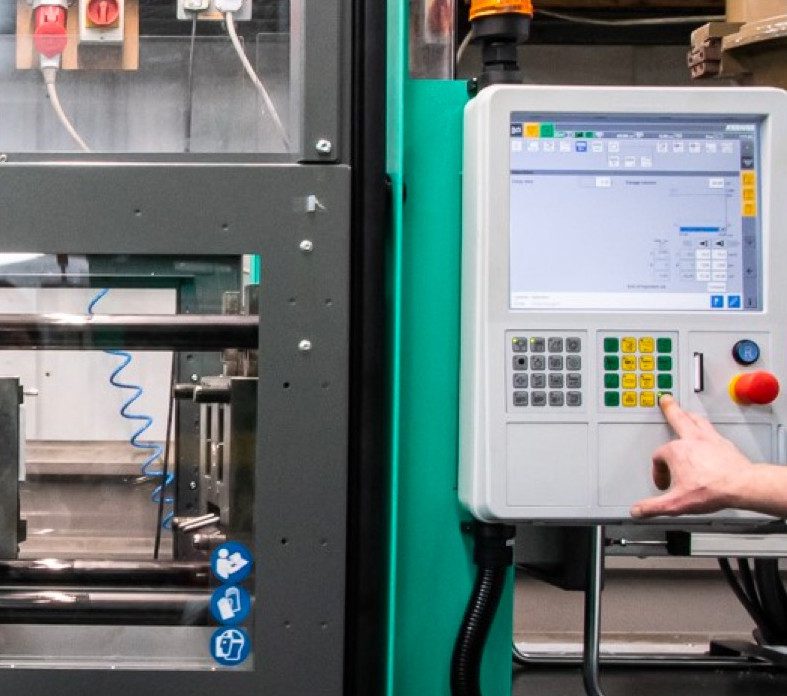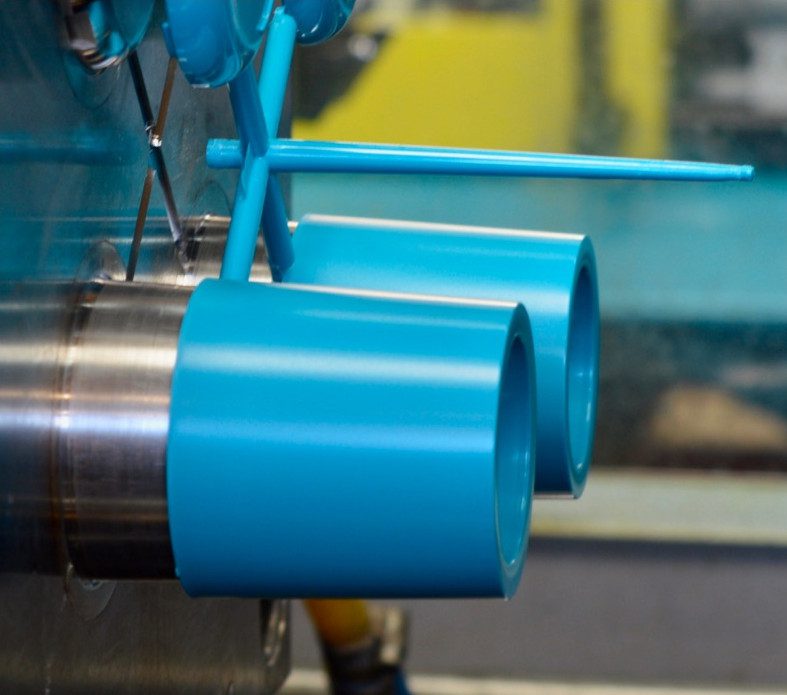Moulding >
Plastic Injection Moulding
What is plastic
injection moulding?
Plastic injection moulding is a cost-effective manufacturing process that allows for the quick production of high volumes of identical plastic parts and mouldings. This involves the injection of molten plastic into either one or multiple cavities within a metal mould, the plastic cools rapidly and is ejected to form a solid finished part.
There are many different types of injection moulding, including more complicated techniques such as overmoulding (combining two moulded components), insert moulding (moulding two components on top of each other at the same time) and filter encapsulation (moulding a plastic frame around a filter) – all of which are carried out at BEC Group’s Hampshire site.


Why use plastic injection
moulding for your project?
Utilising plastic injection moulding for your project has many advantages’ this includes the speed of manufacture, the low costs associated with labour and production, the ability to create bespoke and complex part designs and the variety of thermoplastics that can be used.
You can have the part you want in the precise colour and plastic material that best fits its application in a timely manner and at a relatively low cost, what’s not to like?
What plastic is used
for injection moulding?
Hundreds of different thermoplastics are used in the injection moulding process, ranging from rigid to rubbery, fragile to tough, and translucent to opaque. The plastic material used depends upon its application – the mouldings may need to be impact resistant, chemical resistant, a specific colour, flexible etc. Cost also plays a part in material selection.
Learn more about some of our most popular plastics below:
- Polypropylene
- Acrylic
- HDPE
- Acetal
- PET


How does plastic
injection moulding work?
At BEC Group, a new project usually begins with the creation of a mould tool by our specialist in-house toolmakers. This tool contains a mould within it that forms the shape of the finished product.
Once a steel tool has been designed and built, it is loaded into an injection mould machine, plastic pellets are heated in a barrel attached to this machine, and once the correct temperature has been reached it is injected into the cavity within the tool. The plastic cools down and is then removed from the machine either manually or mechanically.
What can injection moulding
be used for?
The applications are vast and include many commercial and domestic products used in daily life. The casings for your remote control, the knobs in your car, the electric car charger at your workplace and the filters in your tumble dryer are all just a couple of common examples of components moulded through mass production.
Do you have a project that may require plastic injection moulding? Get in touch, and we’ll be happy to help and provide you with a no-obligation quote.

Frequently Asked Questions
What are the 5 steps of plastic injection moulding?
Clamping
Before melted plastic can be injected into a mould, the two halves must be closed by a clamping unit. The clamping unit keeps the mould tightly shut when the plastic is injected into it under high pressure.
Injection
Plastic pellets melted in the hopper above are then injected into the mould through a check valve, pushed by a rotating screw that is shunted by a hydraulic ram. This pushes the molten plastic into the mould tool.
Cooling
Once the plastic has been injected into the mould, the plastic moulding cools down and sets – after it has fully cooled the plastic moulding can be ejected. Cooling time is often the most time-consuming part of the injection moulding process, varying depending upon the plastic used, wall thickness and if cooling channels are used.
Ejection
Once the moulding has cooled, it is time to eject it from the mould tool. There are several ways to eject the part, using pins, blades, bars, sleeves or lifters. Most commonly ejector pins are used to force the part out of the mould tool.
Inspection
Post-ejection the mouldings will need to be inspected to ensure their quality is good enough for the customer. An inspection will look for warping, weld lines, sink marks or flashing which can all indicate that the machine needs to be set slightly differently to produce better quality mouldings. Some mouldings will need to be trimmed or assembled into their final part after inspection.
What are plastic injection mould tools used for?
Plastic injection mould tools are key to producing plastic mouldings. Molten plastic is injected into the tightly shut mould tool to form into the shape of the finished part, it then cools and is ejected from the mould tool.
Mould tools are produced from steel at BEC Group and are expertly made by one our skilled toolmakers to produce high quality mouldings fit for purpose.
How are parts removed from an injection mould?
Once an injection cycle is complete and the plastic part has cooled it can be removed from the injection moulding. This can be done manually; a machinist simply removes the part by hand and puts into a collection box. Parts can also be removed with an ejector system, this is usually done with ejector pins that put pressure on the moulding until it falls out, alternatively blade, sleeve, bar or lifters can be used to eject them.
What is an injection cycle?
An injection moulding cycle is the time it takes for clamping, injection, cooling and ejection to take place. This cycle can last anywhere from two seconds to two minutes, beginning when the mould closes and ending when the part is ejected.
What are the advantages and disadvantages of injection moulding?
As with every method of manufacturing there are advantages and disadvantages to the process.
Advantages of plastic injection moulding include
- The process is quick and low cost
- The product is entirely bespoke to your design, including colour, material etc.
- Small and large runs can be carried out
- A huge range of materials can be used, including recycled plastics and bioplastics
- Your parts are identical each time they are manufactured
Disadvantages include:
- The initial setup costs can be high (due to the cost of making a mould tool)
- Size of the part can be restricted by the size of the moulding machines available
- Smaller runs aren’t always cost effective
What is the best type of plastic for injection moulding?
Many years ago there weren’t many material options for plastic injection moulding, today however there are dozens of options. Some of the most common include ABS, nylon, polycarbonate, LDPE, HDPE, PET and polypropylene. The best type of plastic for the process depends upon its application, nylon for instance is strong and flexible and often resistant to grease and oils-making it perfect for use in automotive filters. Polypropylene is lightweight, has good fatigue and chemical resistance and is relatively low cost, making it great for uses such as patio furniture or electric housings.
New materials are constantly being released- recycled plastics and those made from biological sources that break down into natural elements are being developed and released often due to demand for more sustainable plastic options.
What plastic is the strongest?
The plastics used in plastic injection moulding have many different properties and are tough or strong in different ways. For instance, a customer that requires high impact strength and shatter resistance for a windshield might choose polycabonate, but a customer requiring flexibility and impact strength that feels quite rubbery might choose TPE. It’s all down to how the material is going to be used.
For further information or a
no-obligation quotation simply
contact us today.
Projects








